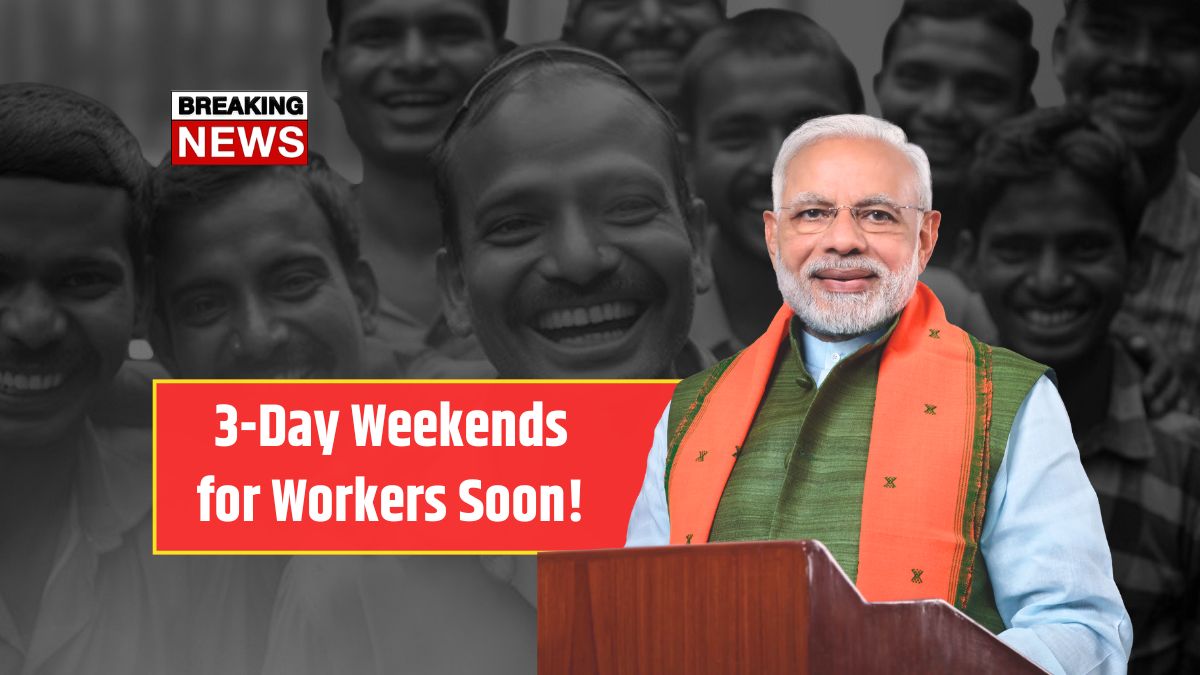New Labor Rules – Big changes are coming to how people in India work, and it’s all starting in 2025. The Indian government is rolling out fresh labour laws aimed at creating a better balance between work and life, improving employee welfare, and streamlining salary structures. From the much-talked-about 4-day workweek to an increase in retirement benefits, here’s what you need to know about the new labour rules and how they might affect your job.
What’s Changing in 2025?
The government is merging more than two dozen old labour laws into four simplified labour codes. These are:
- Code on Wages
- Code on Social Security
- Code on Industrial Relations
- Code on Occupational Safety, Health and Working Conditions
The goal is to make things easier for both workers and companies, with all these rules expected to be active by mid-2025 across India.
What’s in It for You?
The new rules come with several benefits for regular employees, gig workers, and even freelancers. The most exciting update for many is the option of a 4-day workweek. If your company allows, you could work 12 hours a day for 4 days and enjoy 3 days off every week.
But that’s not all. Employees will see changes in how their salary is structured, which will impact how much they take home and how much they save for the future.
Here’s what’s being promised:
- 4-day work option with a 3-day weekend
- Better Provident Fund contributions due to new salary norms
- More safety rules and job security
- Improved benefits for gig and contract workers
How Will the 4-Day Week Actually Work?
If you choose the compressed workweek, you’ll work 12 hours per day over four days. The law still limits your total work time to 48 hours a week, so the extra day off doesn’t mean extra work. You’ll still be paid overtime if you cross 48 hours in a week.
This setup is especially appealing for people with long commutes or those who want extra time for family, studies, or hobbies.
Salary Structure Shake-Up
Under the new wage code, the basic pay part of your salary must be at least 50% of your total CTC (Cost to Company). This change is designed to improve long-term benefits like PF and gratuity, but it might lower your monthly take-home pay a bit.
For example:
| Component | Old Structure | New Structure |
|---|---|---|
| Basic Pay | ₹15,000 | ₹25,000 |
| HRA | ₹10,000 | ₹8,000 |
| Special Allowance | ₹15,000 | ₹7,000 |
| Provident Fund (PF) | ₹1,800 | ₹3,000 |
| Take-Home Salary | ₹40,000 | ₹38,000 |
Even though you might feel a pinch at first, the higher PF and gratuity will pay off in the long run when you retire.
What About PF, Gratuity, and Retirement?
With your basic pay going up, your contributions to PF and gratuity will rise too. This means:
- Bigger retirement savings
- Better pension support
- More money for emergencies after retirement
Your monthly PF will be calculated as 12% of your basic salary, and gratuity will be based on your last drawn basic pay and years of service. So even if your in-hand salary drops a bit now, your future is looking more secure.
Work Hours, Leave, and Overtime
The new rules set a clear 48-hour work limit for the week, whether you choose 4, 5, or 6 workdays. Employers can’t push beyond that without paying overtime. Also:
- Overtime can’t exceed 125 hours in a quarter
- Maternity and paternity leaves are being updated
- Unused leaves will be easier to encash
This brings more flexibility for employees while making sure companies stay fair.
What About Freelancers and Gig Workers?
One of the biggest steps forward is including gig and platform workers under the social security net. So if you’re a delivery rider, driver, or freelancer, you could soon be eligible for:
- Health insurance
- Retirement savings plans
- Better working conditions
Startups and MSMEs will also need to update how they manage payroll and HR to stay compliant.
When Will This All Happen?
The rollout is expected between June and August 2025, and each state is expected to fall in line with these central codes. Some states have already started publishing drafts and preparing for the changes.
What Should You Do?
If you’re working in a private company or freelance full-time, here’s what you can do to prepare:
- Check with your HR about the new work schedule options
- Understand how your salary might change
- Review your PF and gratuity contributions
- Adjust your monthly budget if take-home pay changes
These labour law changes are a big deal—not just for salaried employees but also for contract workers, freelancers, and gig economy players. While there may be a slight hit to your paycheck in the short term, the long-term gains in savings, work-life balance, and job security are worth it. So stay informed and take steps early to adjust. Your future self will thank you.







